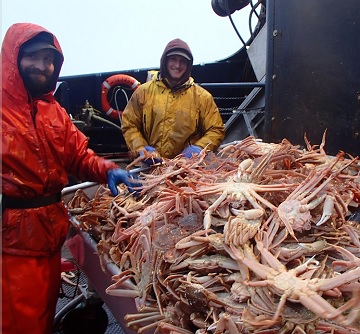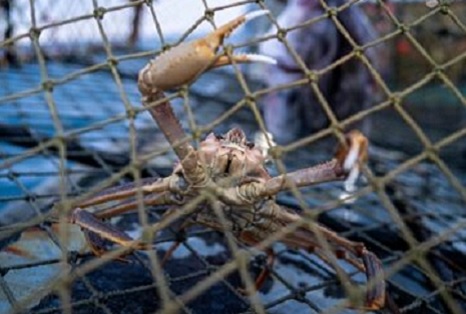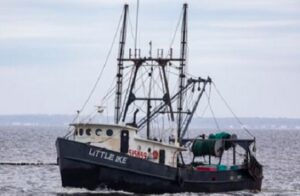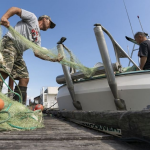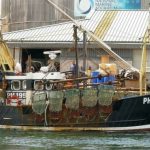Tag Archives: Alaska Department of Fish and Game
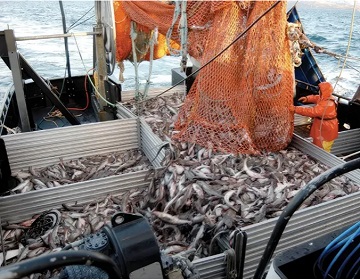
Solutions to the Bycatch Blame Game
The issue of bycatch has grown more important as some fisheries get smaller and those who depend on the fish for their livelihood or survival find that there are not enough fish to go around. This raises the question of whether bycatch is at the root of the problem or if other issues facing fisheries must be addressed. Bycatch is monitored in a combination of ways, through at-sea observers, electronic monitoring, seafood processing plant observers, logbooks, and fish tickets. “In the Bering Sea, approximately 94 percent of all catch is observed, including 99 percent of all trawl catch,” Bush explains. “In the Gulf of Alaska, 40 to 50 percent of all catch is observed across all gear types.” Photos, >click to read< 12:26
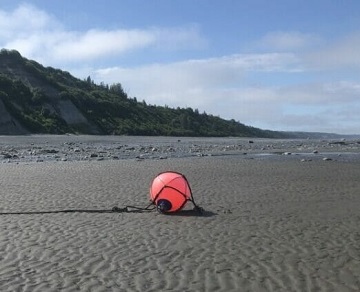
Months before season begins, state closes most Cook Inlet king salmon fishing
Parts of the Kenai River are still frozen over. But the Alaska Department of Fish and Game has already closed the early and late king salmon runs to sport fishing — also shutting down the beleaguered Cook Inlet east side set-net fishery before fishermen can gear up. “This is my 53rd year coming up as a set-netter, and I have never experienced this,” said Ken Coleman, vice president of the Kenai Peninsula Fishermen’s Association. He said he’s never seen the fishery close completely this early. Fish and Game does release a preseason forecast for the early king salmon run every winter, to give guides and fishermen a sense of what to expect before the summer starts. >click to read< 15:09
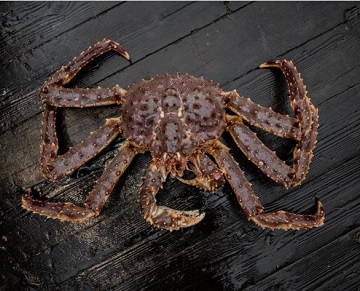
Urgent research to be undertaken on Bristol Bay Red King Crab
Urgent crab research will be getting underway in mid-March thanks to funds provided by both Alaska Department of Fish and Game and NOAA Fisheries, according to reports from Alaska Bering Sea Crabbers. The research is expected to use two chartered crab vessels with three scientists each, plus crew, to conduct research on Bristol Bay red king crab, including a pot survey, tagging, and gear studies. It will span roughly 25 days and begin in mid-March. The survey will set out to accomplish three main goals that may help inform management decisions in the future and will lay out important groundwork for future studies, >click to read< 08:31
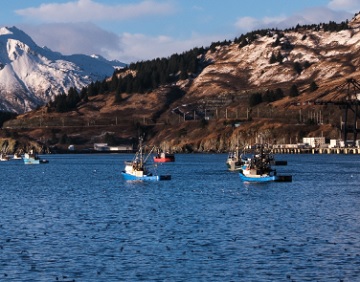
After a highly anticipated start, Kodiak’s Tanner crab season is almost over
Kodiak’s Tanner crab fleet spent the first two weeks of the season tied up at the docks, awaiting better prices from local seafood processors. And after a highly anticipated opener just over a week ago on Jan. 30, the season is nearly over; most of the fishery had closed by the end of the weekend. Fisherman Eddie Perez was selling Tanners from his boat, the F/V Vero Victoria, on Monday morning. He had about 500 crabs on board when he pulled up to the dock – and he expected to sell out by noon. “Everybody’s been really excited, happy that local fishermen are offering to the community and it’s been going really good,” said Perez. >click to read< 15:53
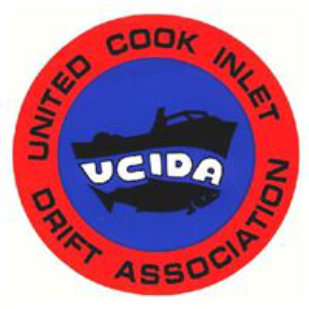
Council has 4 months to fix Cook Inlet salmon fishery management plan
The future of the Cook Inlet salmon fishery is again in the air as the North Pacific Fishery Management Council debates how to manage it after a federal court ruled that it has to write a new plan. It’s been six years since a federal court ruled that the council’s decision to remove Cook Inlet from a federal management plan and defer entirely to the state was illegal. The council initially decided to remove Cook Inlet in 2012, a decision that the United Cook Inlet Drift Association challenged in court. In 2016, the court agreed with the association, ordering the council to create a new federal management plan that includes the federal waters of Cook Inlet. >click to read< 09:47

Alaska crab fishery collapse seen as warning about Bering Sea transformation
Less than five years ago, prospects appeared bright for Bering Sea crab fishers. Stocks were abundant and healthy, federal biologists said, and prices were near all-time highs. Now two dominant crab harvests have been canceled for lack of fish. For the first time, the Alaska Department of Fish and Game in October canceled the 2022-2023 harvest of Bering Sea snow crab, and it also announced the second consecutive year of closure for another important harvest, that of Bristol Bay red king crab. What has happened between then and now? A sustained marine heat wave that prevented ice formation in the Bering Sea for two winters, thus vastly altering ocean conditions and fish health. “We lost billions of snow crab in a matter of months,”,,, >click to read< 18:54
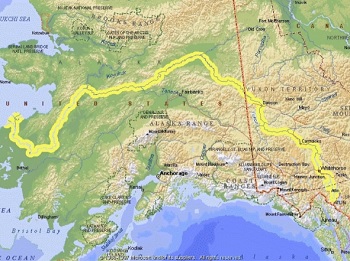
New study proposes to uncover where chinook salmon could be dying en route to Yukon
The state of Alaska is proposing new research to track dwindling chinook salmon numbers this spring, and it’s possible the study could eventually extend into the Yukon. This week, members of the bilateral Yukon River Panel met in Anchorage, Alaska, to brainstorm ways to help the salmon, which undertake one of the longest salmon migrations in the world. It’s during this migration, though, that tens of thousands of salmon seem to go missing every year. >click to read< 10:23
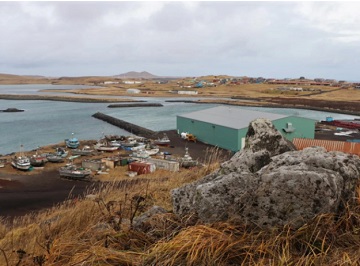
St. Paul government declares emergency in attempt to get ahead of looming crab crash
The Pribilof Island of St. Paul runs on snow crab — also known as opilio crab. The community’s Trident Seafoods is one of the largest crab processing plants in the world. So when fisheries management officials announced the species “overfished” and the Alaska Department of Fish and Game shut down snow crab for the first time in the fishery’s history in October, City Manager Phillip Zavadil knew the community needed to act fast. “We’re trying to get creative and have people understand that this is going to happen more and more, and that we need to address it,” Zavadil said. “We can do something now, instead of waiting for next year, when we don’t have any funding or we can’t provide services.” About two weeks after ADF&G’s closure announcement, the city declared a cultural, economic and social emergency. >click to read< 10:51
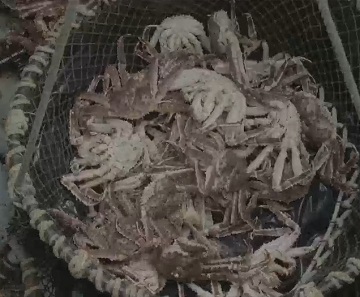
Canceled crab season could devastate Unalaska
As the top fishing port by volume in the nation, fishing runs in the veins of Unalaska. Officials say that nearly everyone in the city relies on the robust seafood industry. “Our only industry is our fishing industry. So everything that goes on in communities are related,” said Frank Kelty, the Fishery consultant for the City of Unalaska. “In 2019, we had the quota of 45 million pounds. Then last year, we were down to 25 million pounds,” Kelty said. This year, that industry came to a drastic halt. “You know 60, 70 boats not buying fuel. Not buying groceries. It adds up pretty quick,” Kelty said. “Those boats aren’t fishing, they are not buying groceries every five days when they come in for a trip, Video, >click to read< 13:42

Southeast Alaska’s summer Dungeness crab fishery worth $10M less than last year
State managers closed Southeast’s Dungeness summer fishery, which opened June 15, two weeks early by emergency order because of low harvest numbers. It’s been five years since the last time that’s happened. This summer season harvest was just under 1.3 million pounds, nearly two million pounds less than last year. Along with the lower harvest, was a corresponding drop in value. This year the fishery was worth $3.77 million. Last year it was $13.03 million. This year’s price was $2.96 per pound. That’s about average for Dungeness crab over the last decade. >click to read< 11:41
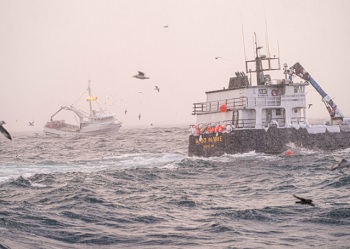
Massive losses predicted from Bering Sea crab closures
While other crab stocks have been declining in the North Pacific for years, the snow crab fishery’s collapse is doubly shocking for the industry. Not only is it one of the larger crab fisheries by volume in Alaska, it has also gone from booming and healthy to overfished and collapsing within five years, with little warning or clear explanation. Fishermen who made investments in permits and boats less than five years ago are now looking at bankruptcy. Alaska Bering Sea Crabbers, the trade organization representing the industry, has estimated the direct financial losses at about $500 million. Adding in the ripple effects to the economy, that estimate rises to about $1 billion. >click to read< 07:50
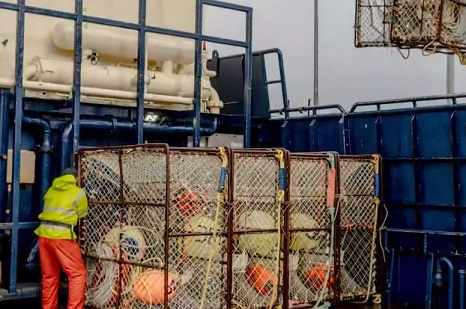
Fishermen fear going out of business after Alaska cancels snow and king crab harvest
For the first time ever, the Bering Sea snow crab harvest is closed, and for the second consecutive year, the Bristol Bay red king crab harvest is as well. The closure will result in fewer King and Snow crabs showing up on the menu, but the biggest impact is being felt by fishermen. “My husband is a 5th generation fisherman. His mom grew up in Ketchikan,” said Bri Dwyer who is a Commercial Fishing Industry photographer and storyteller. Her husband Captain Sean Dwyer is featured on the TV show Deadliest Catch. The family found out with everyone else this week that their crabbing season in the Bering Sea could be nonexistent. Video, >click to read< 08:48
Bering Sea king and snow crab seasons canceled amid population declines – Gabriel Prout co-owns the F/V Silver Spray with his dad and brothers. The Silver Spray is a 116-foot steel crabber that’s homeported in Kodiak. “The real shocking part is the total and complete collapse of the snow crab fishery which no one expected last year when it happened, and a complete closure this year was equally as shocking,” Prout said. >click to read<
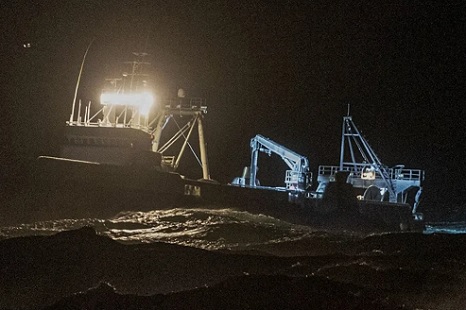
Conservation concerns cancel Alaska’s Bering snow, king crab seasons
Alaska officials have canceled the fall Bristol Bay red king crab harvest, and in a first-ever move, also scuttled the winter harvest of smaller snow crab. The move is a double whammy to a fleet from Alaska, Washington and Oregon pursuing Bering Sea crab in harvests that as recently as 2016 grossed $280 million. “I am struggling for words. This is so unbelievable that this is happening,” said Jamie Goen, executive director of the Alaska Bering Sea Crabbers. “We have third-generation fishermen who are going to go out of business.” >click to read< 14:47
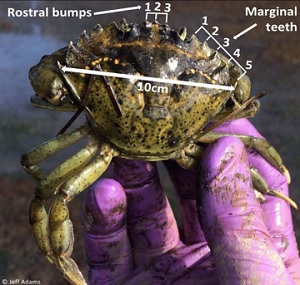
Invasive Green Crab Detected in Alaska for the First Time
The green crab is an invasive marine species spreading throughout the coastal waters of the United States. Efforts between NOAA Fisheries and Metlakatla Indian Community have been leading the way on monitoring to detect this species’ presence in Alaskan waters. The green crab has been found in U.S. waters since the 1800s, but this is the first confirmed presence in Alaska. They are a threat to native species and habitats. They are highly competitive predators that can decimate shellfish populations, outcompete native crabs, and reduce eelgrass and salt marsh habitats. They are a serious threat for Alaska’s tidal habitats. >click to read< 11:47
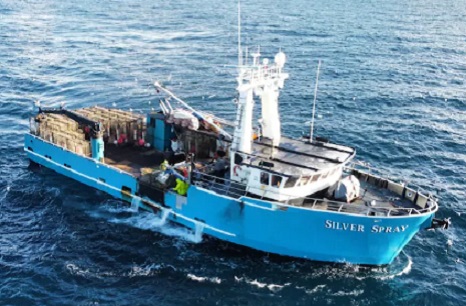
Alaska’s snow crabs have disappeared. Where they went is a mystery.
Gabriel Prout and his brothers Sterling and Ashlan were blindsided. Harvests of Alaskan king crab, the bigger, craggier species that was the star of the television show “Deadliest Catch”, have been on a slow decline for over a decade. But in 2018 and 2019, scientists had seemingly great news about Alaska’s snow crabs: Record numbers of juvenile crabs were zooming around the ocean bottom, suggesting a massive haul for subsequent fishing seasons. Prout, 32, and his brothers bought out their father’s partner, becoming part owners of the 116-foot F/V Silver Spray. They took out loans and bought $4 million in rights to harvest a huge number of crabs. It was a year that many young commercial fishers in the Bering Sea bought into the fishery, going from deckhands to owners. Everyone was convinced the 2021 snow crab season was going to be huge. And then they weren’t there. >click to read< 08:27
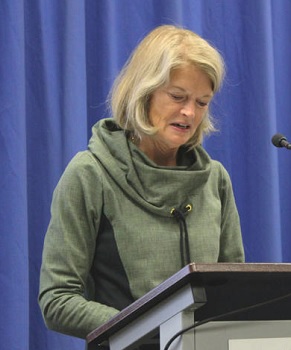
Bycatch stirs debate at fisheries roundtable
Hosted at Kenai Peninsula College by the Kenai River Sportfishing Association, the three-hour event brought together a who’s-who lineup of fisheries and policy experts from Alaska. That lineup included Alaska Department of Fish and Game Commissioner Doug Vincent-Lang, who said Bering Sea trawling is not responsible for Alaska’s declining chinook salmon runs. The Magnuson-Stevens Fishery Conservation and Management Act defines bycatch as fish harvested in a fishery that are not sold or kept for personal use. The phrase is sometimes used generally to refer to the capture of fish that are not being targeted by a specific fishery that are discarded. >click to read< 09:59

Fish and Game closes part of the Upper Cook Inlet to gillnet fishing
The Alaska Department of Fish and Game closed all set gillnet fishing in the Kenai, Kasilof, and East Forelands sections of Upper Cook Inlet after low counts of large king salmon passages. This is the third year in a row that the department has closed this fishery, with Ken Coleman saying it’s becoming a strain on some of those who set gillnets for a living. “We watch the fish jump by, watch everybody else having a good time doing what they do and we’re all losing money,” Coleman said. This closure impacts businesses collectively as it’s a chain reaction effect across the area. Video, >click to read< 15:07

Vessel runs aground near Naknek, prompts temporary fishing closure
After a fishing vessel washed up on shore in the Bristol Bay area near Naknek and leaked diesel fuel, the Alaska Department of Fish and Game temporarily closed commercial salmon fishing. The closure went into effect at 6 p.m. Monday and has since been rescinded. According to the Alaska Department of Fish and Game in King Salmon, there is a salvage crew working on the fishing tender on Naknek Beach south of Pederson Point Cannery. ADFG announced that they have removed major sources of pollutants, but a small residual sheen has been left behind. Video, >click to read< 09:24

Bristol Bay’s sockeye run is already the biggest on record
Bristol Bay’s 2022 sockeye run is now the biggest on record: 69.7 million fish have returned this summer. That surpasses the previous record of 67.7 million fish, which was set last year. Bristol Bay’s commercial fleet hauled in the most fish on record this year. More than 3 million sockeye have swum up the Wood River to spawn in the tributaries around Lake Aleknagik, about 20 miles from Dillingham, according to the state’s counting tower on the river. Sherol Mershon lives along the lake near the head of the river. She owns a bed and breakfast there and has hung commercial fishing nets for 45 years. She said this year’s runs are remarkable. >click to read< 12:10
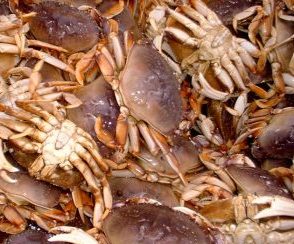
Dungeness crab fishery to close early after slow start
The commercial Dungeness crab fishery in Southeast Alaska will close early this summer because the start of the season has been so slow. In recent years, Dungeness crabbing has been pretty great for commercial fishermen in Southeast. The harvests and prices have been above average, sometimes way above. Last year, saw the second highest harvest on record and the highest price ever paid. The summer season was worth $13 million. But this year looks different. The season opened on June 15. About 200 fishermen registered in the region and they’ve reported poor fishing. “I’ve heard generally it’s slow,” said Joe Stratman with the Alaska Department of Fish and Game. “I’ve heard generally it’s slow throughout the region.” It’s only the third time in the last 20 years that the season has been shortened. >click to read< 10:14
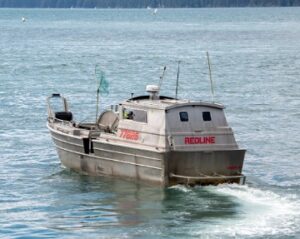
PWS harvest soars above 9M fish, statewide catch exceeds 16M salmon
Commercial harvesters in the Prince William Sound region delivered upwards of 371,340 salmon through Tuesday, June 28, while the statewide preliminary harvest exceeded 16 million fish, including deliveries in Bristol Bay, Cook Inlet, Kodiak and the Alaska Peninsula. Harvests reached almost 8% above year-to-date 2021 (2020 for pinks), led by strong sockeye harvests in the Alaska Peninsula and Bristol Bay regions, according to Sam Friedman, who is producing the McKinley Research Group weekly in-season reports on behalf of the Alaska Seafood Marketing Institute. For Prince William Sound, harvests and the weights of salmon harvested remained below the 10-year average, according to Alaska Department of Fish and Game biologist Jeremy Botz, in Cordova. >click to read< 09:06

Copper River salmon fishery starts slow but sees potential to ramp up
The Copper River sockeye and king salmon fishery is the first each summer, kicking off around the third week of May. Because of that, the fishermen usually land a higher price per pound both for sockeye and kings. This year, the run for the Copper is predicted to be around or below average, and like elsewhere, the kings are scarcer than in past decades. This year is also seeing the sockeye run show up later than usual. Last weekend saw daily numbers increasing passing the Miles Lake sonar on the Copper River, reaching just shy of 39,000 sockeye Sunday, according to the Alaska Department of Fish and Game. That’s the highest daily count yet and puts the total count at about 153,000, ahead of the count at the same time in the last two years. >click to read< 09:20
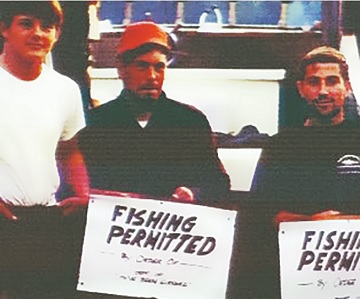
Fishing permitted
Another commercial fishing season is here, and the race is on to get those potentially lucrative “marker” sets. Back in the good old days, a series of signs designating where fishing was prohibited were placed on posts across the Copper River Flats or typically nailed to trees near various streams and bays on Prince William Sound. At one time, the Protection Division of the Alaska Department of Fish and Game even had “stream guards” camped near prime areas to prevent encroachment. “Jumping the gun” to get the first set of an opener was always a tense moment, as was pushing the “line”. One almost longs for the good old days, and some of the colorful stories that resulted. > click to read < 10:29

All eyes on Bristol Bay after state predicts a record season, but fishery’s economics still in flux
The summer salmon season is due to ramp up in Alaska over the next few months, and the main focus of this year’s salmon fishery statewide will be on Bristol Bay sockeye. Of the 160.6 million salmon of all species that the Alaska Department of Fish and Game forecasts will be harvested in 2022, 74 million of those are sockeye and about three-quarters of those would come from Bristol Bay. Another 67.2 million are pink salmon, with the rest made up of smaller numbers of the other three species. If the forecast proves accurate, this will be the biggest year ever for the Bristol Bay fishery. > click to read < 14:15
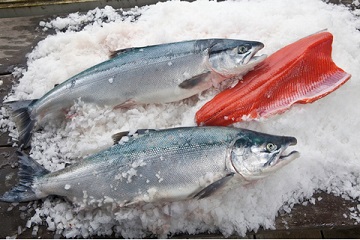
2022 Copper River Salmon Season Launches on May 16th
It’s official. Alaska’s Copper River commercial salmon season will begin on Monday, May 16th, when the region’s commercial fishermen will be allowed to set their nets for a twelve-hour opener to harvest the revered king and sockeye salmon from the icy glacial fed waters of the Copper River Delta. Sustainably harvested according to strict guidelines set by the State of Alaska, Copper River wild salmon, king, sockeye, and coho, are renowned worldwide for good reason. High in protein and naturally rich in heart-healthy omega-3 fatty acids, Copper River salmon return to the region’s massive Delta each year from May to September, making the journey up the steep glacial fed waters. >click to read< 08:54

NPFMC asks industry for recommendations on Bristol Bay red king crab
The Bristol Bay red king crab fishery is historically one of the most valuable in the state, but for the last decade, the stock has been declining. Last fall, surveys showed that the female biomass of the stock had fallen below acceptable levels for harvest, and managers closed it. At the April NPFMC meeting, the council members approved a motion to ask the industry to come back with a list of voluntary actions harvesters and other industry stakeholders can take to help reduce bycatch of Bristol Bay red king crab and reduce discard mortality in the directed fishery. Industry stakeholders include not just the directed harvesters in the red king crab fishery, but also reach to the Pacific cod sector, pollock, and Amendment 80 fleets, which impact red king crab stocks based on area and bycatch rates. >click to read< 15:10

Is It the Last Stand for the Fishermen of the Deadliest Catch?
Fishing has never been an easy job as has been demonstrated on previous seasons of the Deadliest Catch, but when the 18th season premieres this week, it may very well be the last stand as for the first time in a quarter of a century, Alaska’s Department of Fish and Game closed Bristol Bay Red King Crab Fishery for the 2020/2021 season. Times are so desperate that Capt. Sig Hansen has relocated to Karmǿy, Norway, where invasive Red King Crab from Russia offer a temptingly lucrative, but risky new market for the veteran crabber, after a disastrous attempt to keep the fishery open. Video trailer, >click to read< 12:16

Record commercial herring harvest wraps up in Sitka Sound
The commercial herring fishery in Sitka Sound wrapped up Sunday, April 10, with its largest harvest on record. The sac roe fishery had daily openings last week, with the last one on Sunday. The Alaska Department of Fish and Game estimates the catch totaled over 26,350 tons, more than half of this year’s guideline harvest level of 45,164 tons. That beats the previous record for the fishery from 2011, when the fleet caught 19,419 tons. Fishing started on March 26. >click to read< 11:37






